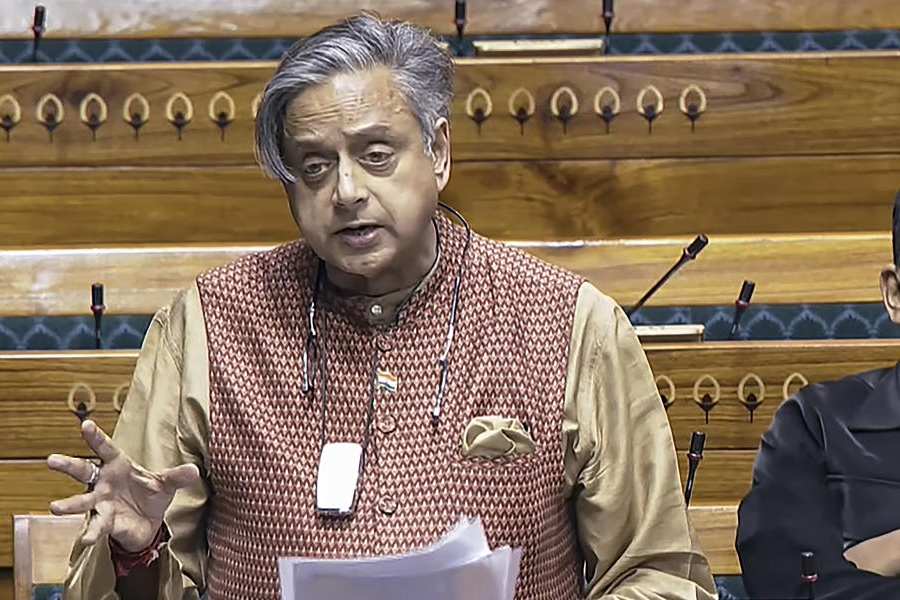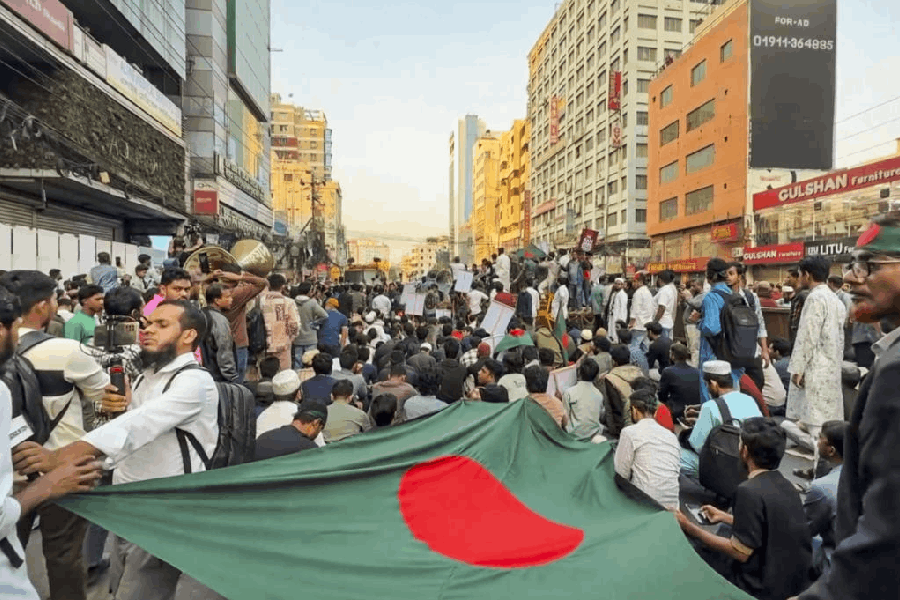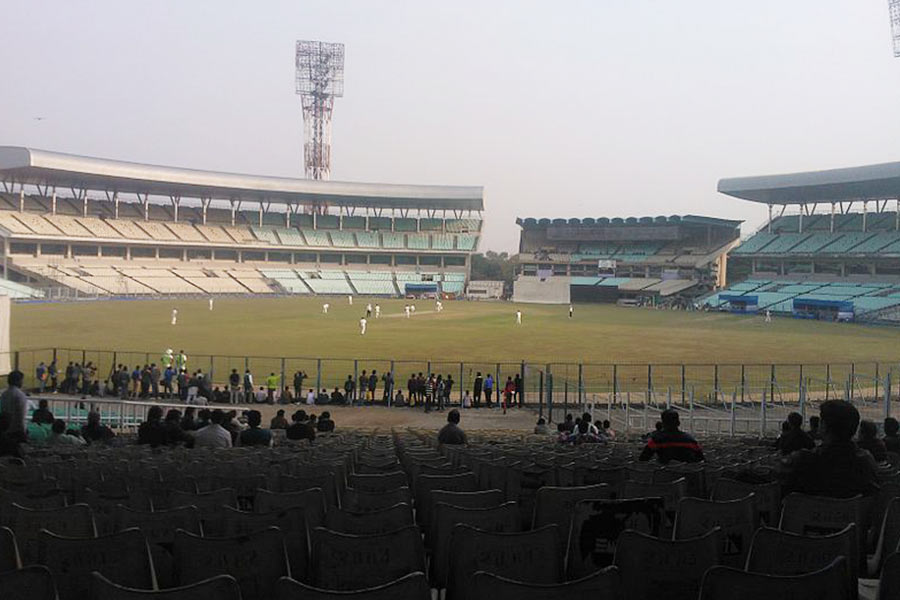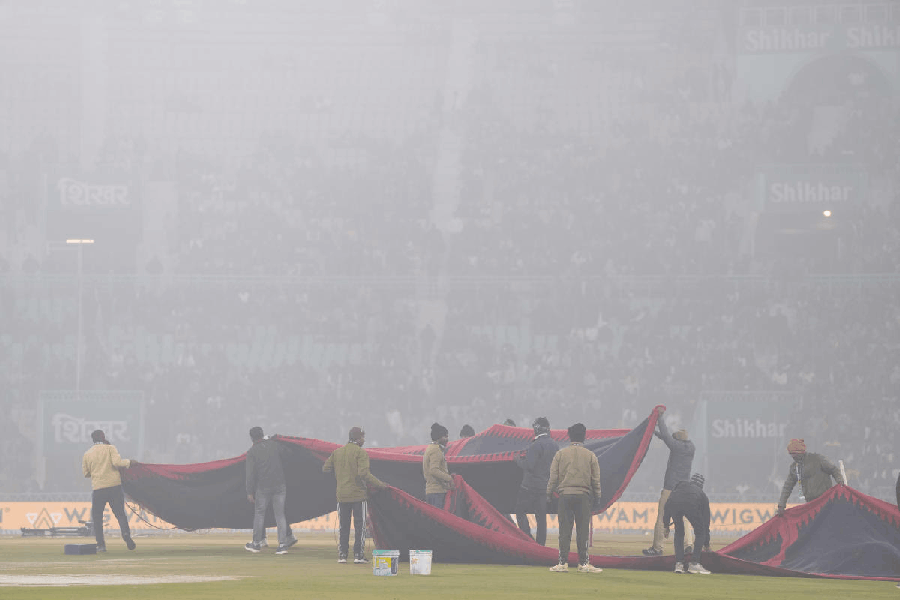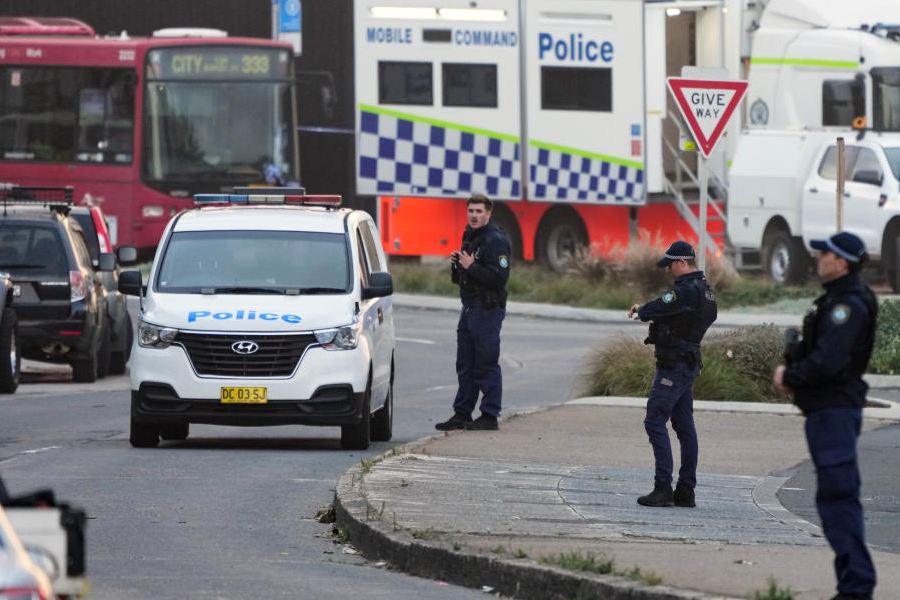|
|
The corner of the two narrow roads in Lake Gardens, off which P. Lal and Shyamasree Lal built their house, is still pretty recognizable from the time I first started to visit their place at the age of six or seven, in the mid-1960s. There was a kholaa maath almost right in front, which was built over about 30 years ago. Other than that, the small shops and the little motor garage a few yards away could all be from 1971. The day after he died, when I went to get some dhoop to put around Professor Lal’s body, the shopkeeper of the tiny shop a couple of lanes down remembered him. “Han, Professor-shaheb. I heard he passed away last night. You know I remember him from when we used to be in half-pants, going to school.” The shop hasn’t changed much either since I used to stop there in my own half-pants to buy lozenges. At least that’s what my memory tells me.
If anything could be said in favour of Lake Gardens — a backwater pocket in the middle of what was then deep south Calcutta — with its mud roads, open gutters and obscenely lush greenery — it was that here was a colony dotted with hugely talented and determined exiles from mainstream society. Paritosh Sen lived there, near the mor; my parents, strange Gujjus, mother, professor, father, writer and dramatist, were next to Bangur Park; down the road were Mr and Mrs Singhi, the most atypical Marwari couple you could come across, far more involved in education and social service than any money-making; next to them, the Lals; further down the road was Susheela Bhandari, ‘Sheela Didi’, who ran one of the best and most radical Montessori schools in India; then came the Venkateswar family, again, with Mrs Venkateswar who is an educationist and social worker; beyond that, in adjacent Jodhpur Park, lived Manu Parikh, now the well-known painter but then perceived locally as that strange oxymoronic creature — a ‘Gujarati artist’; and in the same para, Jyoti Dutta, madman, poet, intellectual, celebrator of life extraordinaire. Paritoshbabu left and Nirode Mazumdar and his wife rapidly filled the vacuum by occupying the large first floor above a bank nearby, with their menage of animals, birds and French-speaking children who, unlike the rest of us kids, seemed to have permission to play around an apartment filled with still-drying oil paintings without wearing too many clothes.
In P. Lal’s house, everything was a bit more buttoned up. I got to know his 16-year-old son, Ananda, when I was about 13, but there was no question of just barging in to see him, as I would with other para friends. You rang the bell, someone sat you in the hushed living-room, after which A. Lal came and escorted you upstairs past a lowering guard of packed bookshelves and Jamini Roy paintings. This happened even if it was my fourth visit of the week. But, again, this was Calcutta and you learned to look beyond the first theatre curtain that confronted you. The living room was actually quite welcoming. The bookshelves on the stairs contained not just the sari-bound Writers Workshop books and other serious tomes but also the Prof’s fine collection of DC comics. On the terrace, my pal Lal’s teenage lair was a mosh-pit of records, cassettes, books and foreign music magazines.
A. Lal very much had his own mind and agendas but it was also clear to me that all this bounty came from his father’s visits to the States, where the Prof would meet the shopping lists by his two children: music and books, and art materials for Srimati, Ananda’s sister. I also recognized that it was not so much about the stuff as the thinking and experience that came with it; just as my own father encouraged me to cross normally accepted boundaries, here was another weird dad who actually thought his children should discover the world and enjoy life while learning and growing up.
I knew P. Lal was working on the Mahabharat but I had little interest in that; I also knew he was a brilliant guru of English at St Xavier’s but, since that institution had rejected me for my inadequate Angreji at the age of six, I had no great connection with either the school or the college. I benefited, first from my father’s friendship with the Prof, and consequently, from my friendship with the Prof’s son. My father and P. Lal became friends when the Prof published the only work my father wrote in English, a play on Gandhi called He Never Slept So Long. Besides a passionate commitment to bridging the gaps between English and the other Indian languages, the two men shared a passion for Sanskrit, for literature generally, a highly refined aesthetic sense and a rare ability to laugh at the world and themselves. I first got to know P. Lal and Shyamasreemashi through my parents, but rapidly my connection to the house became independent of them.
Every now and then, going up or down the stairs at Ananda’s, the tall man would ambush us. “You! Psst! You and my son think you know everything, but have you seen this?” And he would invite us into his study to show me a photograph, a painting reproduction or a book. With great humour and lightness he would then proceed to discuss something with a teenager like me as if he was talking to an equal. Behind and around us would be Shyamasree Lal, full of quiet wisecracks, overseeing tea and biscuits and pricking any balloon of self-importance, present or nascent in husband, son or son’s friend.
It was a very easy, exciting and pleasurable time, and being the age I was, I took it for granted. I used to think of the Lal house as the House of Happy Surprises and its memory sustained me when I was away from home and Calcutta, when I was blue, homesick or fighting the humiliations life inevitably hands out to cocky adolescents. Later, in Vermont, I picked up obscure secondhand jazz records, in New York I bought calligraphy pens, in Paris, serious graphic novels in languages I didn’t understand and, each time, I connected the purchase back to Lake Gardens. In college in America or working as an Art Cinema gofer in Bombay, I realized I had at least some knowledge, some understanding, some confidence that went deeper than mere bravado because I’d been nourished in the great cocoon of seemingly obscure Lake Gardens, because I’d been hugely lucky in having the parents I did, who had the friends they did, such as Shyamasree and P. Lal.
Recently, I came across a thick piece of old A4 paper. Printed horizontally across the bottom was my name and my Lake Gardens address. The beautiful calligraphy was unmistakable as was the letter-press quality of the printing. I was normally quite relaxed with the Prof but when (at age 15) I asked him if he would calligraph me a letterhead, I was balancing on eggshells. “Hm. Letterhead. What do you need a letterhead for? Business? Love letters? Not a good idea to write love-letters on a letterhead, you do know that?” He took down my exact address, (different from his own by two digits) and said nothing more. A few days later, Ananda handed me a neat brown paper packet. “Baba gave me this for you.” Inside were a hundred letterheads, 99 of which I can’t now locate, even though I wrote no love letters on them. The one I still have does remind me, though, that the courage to think beyond the ordinary, that deep intellectual pursuit, can be fun, can be play, can be done accompanied by laughter and yes, that outdated and almost discredited word, ‘joy’. That and the possibility that someone from Lake Gardens could be equal to anyone in the world of arts and letters. That is the magically indelible calligraphy with which P. Lal has left me.



